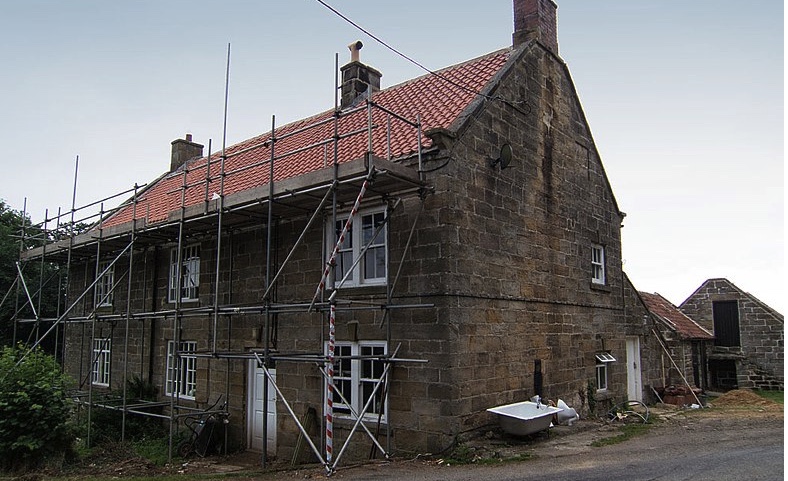A Comprehensive Guide to Home Renovation Loans: Everything You Need to Know

Home renovations can transform your living space, adding value, comfort, and personal flair. However, funding these improvements can be a challenge. This is where home renovation loans come into play.
These loans are designed to help homeowners finance updates or repairs to their property without depleting savings or using high-interest credit cards. In this guide, we’ll break down the essentials of a home renovation loan, how they work, and what to consider before applying.
What Is a Home Renovation Loan?
A home renovation loan is a financial product specifically for funding improvements or repairs to a home. It allows homeowners to borrow money for projects like remodelling kitchens, updating bathrooms, or adding an extension. Unlike personal loans, which can be used for various purposes, renovation loans are typically tied to home improvement projects, making them a focused option for homeowners.
Types of Home Renovation Loans
There are several types of loans available for financing home renovations. Understanding the differences can help you choose the best option for your needs.
1. Personal Loans
A personal loan is an unsecured loan that can be used for home improvements. Since it doesn’t require collateral, it’s a good option if you don’t want to use your home as security. However, personal loans often have higher interest rates compared to secured loans, and the amount you can borrow might be lower.
2. Home Equity Loans
A home equity loan allows you to borrow against the equity you’ve built in your home. It offers a lump sum of money with a fixed interest rate, making it ideal for larger projects. Because it uses your home as collateral, the interest rates are generally lower than personal loans, but there’s a risk of foreclosure if you fail to make payments.
3. Home Equity Line of Credit (HELOC)
Similar to a home equity loan, a HELOC lets you borrow against your home’s equity. However, it works more like a credit card, giving you access to a revolving line of credit you can draw from as needed. The flexibility of a HELOC is great for ongoing projects, but the interest rates may vary, which can impact your repayment plan.
4. Construction Loans
For major renovations or rebuilding projects, a construction loan is designed to cover the costs of constructing or extensively renovating a home. These loans are often short-term and provide funds in stages as the project progresses. Once the renovation is complete, the loan is typically converted into a standard mortgage.
Key Considerations Before Taking a Home Renovation Loan
Before applying for a home renovation loan, it’s crucial to assess several factors to ensure you’re making a sound financial decision.
1. Budget and Scope of Renovation
Understanding the full scope of your renovation project is key. Create a detailed budget that includes material costs, labour, permits, and unexpected expenses. This will help determine how much money you’ll need to borrow and keep your project on track.
2. Loan Terms and Interest Rates
Different loans come with varying terms and interest rates. Make sure to compare rates from multiple lenders and evaluate the total cost of borrowing. Fixed-rate loans offer consistent payments, while variable-rate loans may fluctuate over time, affecting your monthly payments.
3. Impact on Home Value
Consider how your renovation will impact the value of your home. While some projects, like kitchen remodels or energy-efficient upgrades, may significantly boost your home’s resale value, others might not provide the same return on investment. It’s important to weigh the cost of the renovation against the potential increase in home value.
4. Your Financial Situation
Ensure that you have a stable financial foundation before taking on additional debt. Review your credit score, current debt obligations, and overall financial health. The better your credit score, the more favourable loan terms you may receive, helping you save money over time.
How to Apply for a Home Renovation Loan
Applying for a home renovation loan can be straightforward if you’re well-prepared. Here are the typical steps involved:
1. Assess Your Financial Health
Check your credit score, current debts, and income to determine your eligibility for a loan. Lenders will review these factors when deciding your loan amount and interest rate.
2. Get Pre-Approved
Pre-approval from lenders gives you an idea of how much you can borrow and at what interest rate. It’s a good idea to shop around and get pre-approved by multiple lenders to compare terms.
3. Choose the Right Loan Type
Based on your project’s size and scope, select the loan type that best suits your needs. A personal loan may be ideal for smaller projects, while a HELOC might be better for ongoing renovations.
4. Submit Your Application
Once you’ve chosen a lender and loan type, submit your application with the necessary documentation, such as proof of income, credit history, and details of your renovation project.
5. Receive the Funds and Start Your Renovation
After approval, you’ll receive the loan funds and can begin your home renovation. Be sure to manage your budget carefully to ensure the project stays within your financial limits.
Conclusion: Is a Home Renovation Loan Right for You?
A home renovation loan can be an excellent way to finance improvements that increase the comfort and value of your home. However, it’s important to carefully evaluate your financial situation, the loan terms, and the expected return on investment before committing to a loan.
By planning ahead and selecting the right loan for your needs, you can take the next step in turning your home renovation dreams into reality.
Spotted something? Got a story? Send a Facebook Message | A direct message on Twitter | Email: [email protected] Latest News








